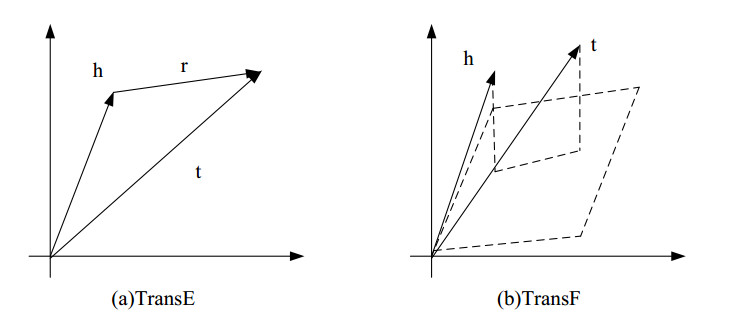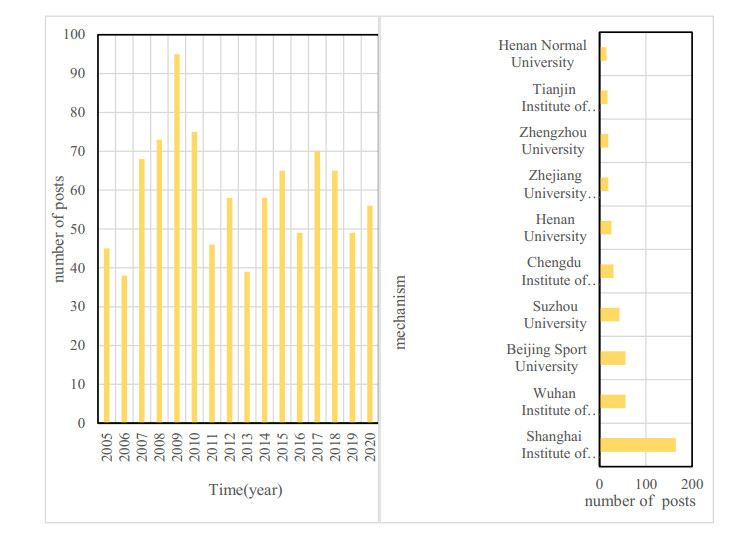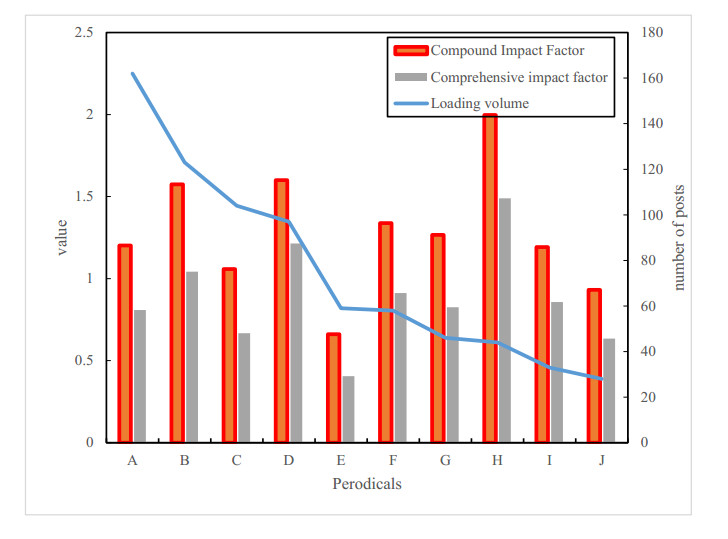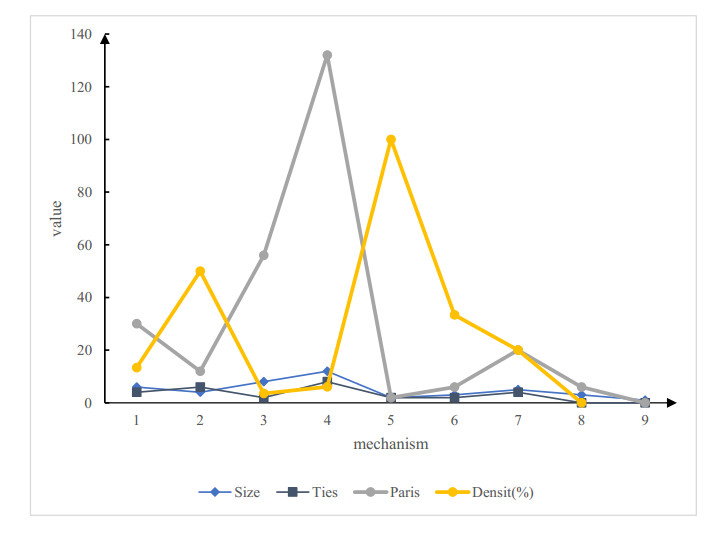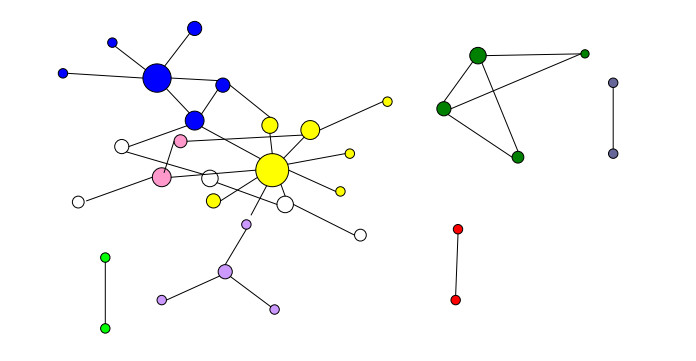1.
Introduction and definitions
Assume that A represents the family of analytic functions in the open unit disc
For f1, f2∈A, we say that f1 subordinate to f2 in U, indicated by
if there exists a Schwarz function w, defined by
that satisfies the condition
Indeed, it is known that
Moreover, if the function f2 is univalent in U then
Let the class P be defined by
The class of all functions in the normalized analytic function class A that are univalent in U is also denoted by the symbol S. The maximization of the non-linear functional |a3−μa22| or other classes and subclasses of univalent functions has been the subject of a number of established results and these results are known as Fekete-Szegö problems, see [1]. If f∈S and of the form (1.1), then
and the result |a3−μa22| are sharp (see [1]). The Fekete-Szegö problems have a rich history in literature and for complex number μ.
In the area of geometric function theory (GFT), the q-calculus and fractional q-calculus have been extensively employed by scholars who have developed and investigated a number of novel subclasses of analytic, univalent and bi-univalent functions. Jackson [2,3] first proposed the concept of the q-calculus operator and gave the definition of the q -difference operator Dq in 1909. In instance, Ismail et al. were the first to define a class of q-starlike functions in open unit disc U using Dq in [4]. The most significant usages of q -calculus in the perspective of GFT was basically furnished and the basic (or q-) hypergeometric functions were first used in GFT in a book chapter by Srivastava (see, for details, [5]). See the following articles [6,7,8,9,10] for more information about q-calculus operator theory in GFT.
Now we review some fundamental definitions and ideas of the q -calculus, we utilize them to create some new subclasses in this paper.
For a non-negative integer l, the q-number [l]q, (0<q<1), is defined by
and the q-number shift factorial is given by
For q→1−, then [l]! reduces to l!.
The q-generalized Pochhammer symbol is defined by
The q-gamma function Γq is defined by
The q-generalized Pochhammer symbol is defined by
Remark 1. For q→1−, then [l]q,k reduces to (l)k=Γ(l+k)Γ(l).
Definition 1. Jackson [3] defined the q-integral of function f(z) as follows:
Jackson [2] introduced the q-difference operator for analytic functions as follows:
Definition 2. [2] For f∈A, the q-difference operator is defined as:
Note that, for n∈N, z∈U and
Let Ap stand for the class of analytic functions with the form
in the open unit disk U. More specifically, A1=A and
Consider the q-difference operator for f∈Ap as follows:
Definition 3. [11] For f∈Ap, the q-difference operator is defined as:
Note that, for n∈N, z∈U and
Let S∗(p) represents the class of p-valent starlike functions and every f∈S∗(p), if
and K(p) represents the class of p-valent convex functions and every f∈K(p), if
These conditions are equivalent in terms of subordination as follows:
and
The aforementioned two classes can be generalized as follows:
and
where φ(z) is a real part function that is positive and is normalized by the rule
and φ maps U onto a space that is symmetric with regard to the real axis and starlike with respect to 1. If p=1, then
and
These two classes S∗(φ) and K(φ) defined by Ma [12].
A function f∈Ap, is called p-valently starlike of order α (0≤α<1) with complex order b∈C∖{0}, if it satisfies the inequality
The class S∗p(α,b) denotes the collection of all f∈Ap functions that satisfy the aforementioned condition.
A function f∈Ap, is called p-valently convex function of order α (0≤α<1) with complex order b∈C∖{0}, if it satisfies the inequality
The class Kp(α,b) denotes the collection of all functions f∈Ap that satisfy the aforementioned condition.
Note that
Kargar et al. [13] investigated the classes Sp(α,β) for f∈Ap and defined as follows:
For 0≤α<1<β and b∈C∖{0}, then the function f∈Ap belongs to the class Kb,p(α,β) if it satisfies the inequality
If p=1, then Kb,p(α,β)=Kb(α,β), studied by Kargar et al. in [13] and if β→∞ in above definition, Kb,p(α,β)=Kb,p(α,b).
Recently, Bult [14] used the definition of subordination and defined new subclasses of p-valent starlike and convex functions associated with vertical strip domain as follows:
and
where
and
Bult [14] determined the coefficient bounds for functions belonging to these new classes.
On the basis of the geometrical interpretation of their image domains, numerous subclasses of analytic functions have established using the concept of subordination. Right half plane [15], circular disc [16], oval and petal type domains [17], conic domain [18,19], leaf-like domain [20], generalized conic domains [21], and the most important one is shell-like curve [22,23,24,25] are some fascinating geometrical classes we obtain with this domain. The function
is essential for the shell-like shape, where
The image of unit circle under the function h gives the conchoid of Maclaurin's, due to the function
The function given in (1.3) has the following series representation:
where
and un produces a Fibonacci series of coefficient constants that are more closely related to the Fibonacci numbers.
Taking motivation from the idea of circular disc and shell-like curves, Malik et al. [26] defined new domain for analytic functions which is named as cardioid domain. A new class of analytic functions is defined associated with cardioid domain, for more detail, see [26].
Definition 4. [26] Assume that CP(L,N) represents the class of functions p that are defined as
where ¯p(L,N,z) is defined by
with −1<N<L≤1, τ=1−√52 and z∈U.
To understand the class CP(L,N), an explanation of the function ¯p(L,N,z) in geometric terms might be helpful in this instance. If we denote
and
then the image ¯p(L,N,eiθ) of the unit circle is a cardioid like curve defined by
where
and
Moreover, we observe that
and
According to (1.5), the cusp of the cardioid-like curve is provided by
The image of each inner circle is a nested cardioid-like curve if the open unit disc U is considered a collection of concentric circles with origin at the center. As a result, the open unit disc U is mapped onto a cardioid region by the function ¯p(L,N,z). This means that ¯p(L,N;U) is a cardioid domain. The above discussed cardioid like curve with different values of parameters can be seen in Figures 1 and 2.
The relationship N<L links the parameters L and N. The cardioid-like curve is flipped by its voilation, as seen in the figures below.
See Figure 3, if collection of concentric circles having origin as center. Thus, the function ¯p(L,N,z) maps the open unit disk U onto a cardioid region. See [26] for more details about cardioid region.
The operator theory of quantum calculus is the primary result of this research. Using standard uses in quantum calculus operator theory and the q -difference operator, we develop numerous novel q-analogous of the differential and integral operators. We construct a large number of new classes of q-starlike and q-convex functions using these operators and study some interesting characteristics of the corresponding analytic functions. In this paper, we gain inspiration from recent research by [14,26,27] and define two new classes of p-valent starlike, convex functions connected with the cardioid domain using the q-difference operator.
Influenced by recent studies [14,26,27], we defined two new classes of p-valent starlike, convex functions related with cardioid domain.
Definition 5. The function f of the form (1.1) related with cardioid domain, represented by S∗p(L,N,q,b), is defined to be the functions f such that
where, b∈C∖{0} and ¯p(L,N;z) is given by (1.4).
Definition 6. The function f of the form (1.1) related with cardioid domain, represented by Kp(L,N,q,b), is defined to be the functions f such that
where b∈C∖{0} and ¯p(L,N;z) is given by (1.4) and Kp(L,N,q,b) is the class of convex functions of order b related with cardioid domain.
Special cases:
(i) For q→1−,b=1 and p=1, in Definition 5, we have known class S∗(L,N) of starlike functions associated with cardioid domain proved by Zainab et al. in [27].
(ii) For q→1−,L=1,N=−1, b=1 and p=1 in Definition 5, then class S∗p(L,N,q,b)=SL and this class is defined on starlike functions associated with Fibonacci numbers, introduced and studied by Sokół in [28].
(iii) For q→1−, L=1, N=−1, b=1 and p=1 in Definition 6 then class Kp(L,N,q,b)=K, and this family is referred to as a class of convex functions connected with Fibonacci numbers.
There are four parts to this article. In Section 1, we briefly reviewed some basic concepts from geometric function theory, quantum calculus, and cardioid domain, studied the q-difference operator, and finally discussed this operator to define two new subclasses of multivalent q-starlike and q-convex functions. The established lemmas are presented in Section 2. Our main results and some known corollaries will be presented in Section 3, then some concluding remarks in Section 4.
2.
A set of lemmas
By utilizing the following lemmas, we will determine our main results.
Lemma 1. [26] Let the function ¯p(L,N;z), defined by (1.4). Then,
(i) For the disc |z|<τ2, the function ¯p(L,N;z) is univalent.
(ii) If h(z)≺¯p(L,N;z), then Reh(z)>α, where
where
and
(iii) If
then
where
(iv) Let h(z)≺¯p(L,N;z) and of the form h(z)=1+∞∑n=1hnzn. Then
Lemma 2. [29] Let h∈P, such that h(z)=1+∞∑n=1cnzn. Then
and
Lemma 3. [30] Let h∈P, such that
Then for any complex number v
and the result is sharp for
Lemma 4. [31] Let the function g given by
be convex in U. Also let the function f given by
be analytic in U. If
then
For the recently described classes of multivalent q-starlike (S∗p(L,N,q,b)) and multivalent q-convex (Kp(L,N,q,b)) functions, we get sharp estimates for the coefficients of Taylor series, Fekete-Szegő problems and coefficient inequalities.
3.
Main results
In the following theorems, we investigate the functions f(z) which can be used to find the sharpness of the results of this article.
Theorem 5. A function f∈Ap given by (1.1) is in the class S∗p(L,N,q,b) if and only if there exists an analytic function S,
where, ¯p(L,N,0)=1, such that
Proof. Let f∈S∗p(L,N,q,b) and
Then by integrating this equation we obtain (3.1). Conversely, if given by (3.1) with an analytic function S(z) such that S(z)≺¯p(L,N,z), then by logarithmic differentiation of (3.1) we obtain
Therefore we have
and f∈S∗p(L,N,q,b).
□
The initial coefficient bounds |ap+1| and |ap+2| for the functions f∈S∗p(L,N,b) are investigated in Theorem 6 using the Lemma 2.
Theorem 6. Let f∈S∗p(L,N,q,b) be given by (1.1), −1≤N<L≤1. Then
These bounds are sharp.
Proof. Let f∈S∗p(L,N,q,b), and of the form (1.1). Then
where
By applying the concept of subordination, there exists a function w with
such that
Let
Since
then
Also consider the function
Let τz=α0, then
This implies that
It is simple to observe from (3.5) that
Since f∈S∗p(L,N,b), then
It is simple to show that by utilizing (3.3) and comparing the coefficients from (3.7) and (3.8), we get
Applying modulus on both side, we have
Now again comparing the coefficients from (3.7) and (3.8), we have
where
It shows that v>2 which is satisfied by the relation L>N. Hence, by applying Lemma 2, we obtain the required result.
Result is sharp for the function
where ¯p(L,N,) defined in (1.4). □
Letting q→1−, b=1 and p=1 in Theorem 6, we get the known corollary proved in [32] for starlike functions connected with cardioid domain.
Corollary 1. [32] Let f∈S∗(L,N) be given by (1.2), −1≤N<L≤1. Then
Fekete-Szegö problem |ap+2−μa2p+1| for the functions f∈S∗p(L,N,b) are investigated in Theorem 7.
Theorem 7. Let f∈S∗p(L,N,q,b) and of the form (1.1). Then
This result is sharp.
Proof. Since f∈S∗p(L,N,q,b), we have
where w is Schwarz function such that w(0) and |w(z)|<1 in U. Therefore
and after some simple calculation, we have
Comparing the coefficients of both sides, we get
This implies that
where
By using (iv) of Lemma 1 for
we have the required result. The equality
holds for f∗ given in (3.11). Consider f0: U→C defined as:
where, ¯p(L,N;z) is defined in (1.4). Hence
This demonstrates f0∈S∗p(L,N,q,b). Hence the equality
holds for the function f0 given in (3.12).
□
Letting q→1−, b=1 and p=1 in Theorem 7, we get the known corollary proved in [32] for starlike functions associated with cardioid domain.
Corollary 2. [32] Let f∈S∗(L,N) and of the form (1.2). Then
This result is sharp.
Coefficient inequality for the class S∗p(L,N,b):
Theorem 8. For function f∈Ap, given by (1.1), if f∈S∗p(L,N,q,b), then
Proof. Suppose f∈S∗p(L,N,q,b) and the function S(z) define by
Then by Definition 5, we have
where, b∈C∖{0} and ¯p(L,N;z) is given by (1.4). Hence, applying the Lemma 4, we get
where
and by (2.1), we have
Also from (3.13), we find
Since ap=1, in view of (3.16), we obtain
Applying (3.14) into (3.17), we get
For n=1,2,3, we have
and
respectively. Applying the equality (3.15) and using the mathematical induction principle, we obtain
This evidently completes the proof of Theorem 8. □
The initial coefficient bounds |ap+1| and |ap+2| for the functions f∈Kp(L,N,q,b) are investigated in Theorem 9 using the Lemma 2.
Theorem 9. Let f∈Kp(L,N,q,b) be given by (1.1), −1≤N<L≤1. Then
These bounds are sharp.
Proof. Let f∈Kp(L,N,q,b), and be of the form (1.1). Then
where
By applying the concepts of subordination, there exists a function w with
such that
Let
Since
then
Also consider the function
Let τz=α0. Then
This implies that
It is simple to observe from (3.21) that
Since f∈Kp(L,N,q,b), then
It is simple to show that by utilizing (3.19) and comparing the coefficients from (3.23) and (3.24), we get
Applying modulus on both side, we have
Now again comparing the coefficients from (3.7) and (3.8), we have
where
it shows that v>2 which is satisfied by the relation L>N. Hence, by applying Lemma 2, we obtain the required result.
Result is sharp for the function
where ¯p(L,N,) defined in (1.4). □
Fekete-Szegö problem |ap+2−μa2p+1| for the functions f∈Kp(L,N,q,b) are investigated in Theorem 10.
Theorem 10. Let f∈Kp(L,N,q,b) and be of the form (1.1). Then
This result is sharp.
Proof. Since f∈Kp(L,N,b), we have
where w is Schwarz function such that w(0) and |w(z)|<1 in U. Therefore
and after some simple calculation, we have
Comparing the coefficients of both sides, we get
This implies that
where
By using (iv) of Lemma 1 for
we have the required result. The equality
holds for f∗ given in (3.25). Consider the function f0: U→C be defined as:
where, ¯p(L,N;z) is defined in (1.4). Hence and
□
Theorem 11. Let f∈Ap, be given by (1.1). If f∈Kp(L,N,b), then
Proof. We can obtain Theorem 11, by using the same technique of Theorem 8. □
4.
Conclusions
In this article, we have used the ideas of cardioid domain, multivalent analytic functions, and q-calculus operator theory to define the new subfamilies of multivalent q-starlike and q-convex functions. In Section 1, we discussed some basic concepts from geometric functions, analytic functions, multivalent functions, q-calculus operator theory, and the idea of the cardioid domain. We also define two new classes of p-valent starlike, convex functions connected with the cardioid domain using the q -difference operator. The already known lemmas are presented in Section 2. In Section 3, for the class S∗p(L,N,q,b), we investigated sharp coefficient bounds, Fekete-Szegö functional, and coefficient inequalities. Same type of results also studied for the class S∗p(L,N,q,b). The research also demonstrated how the parameters, including some new discoveries, expand and enhance the results.
For future studies, researchers can use a number of ordinary differential and q-analogous of difference and integral operators and can define a number of new subclasses of multivalent functions. By applying the ideas of this article, many new results can be found. The idea presented in this article can be implemented on papers [33,34,35], and researchers can discuss the new properties of multivalent functions associated with the cardioid domain.
Use of AI tools declaration
The authors declare that they did not employ any artificial intelligence in the execution of this work.
Acknowledgments
The authors extend their appreciation to the Arab Open University for funding this work through research fund No. (AOURG-2023-007).
Conflict of interest
All the authors claim to have no conflicts of interest.
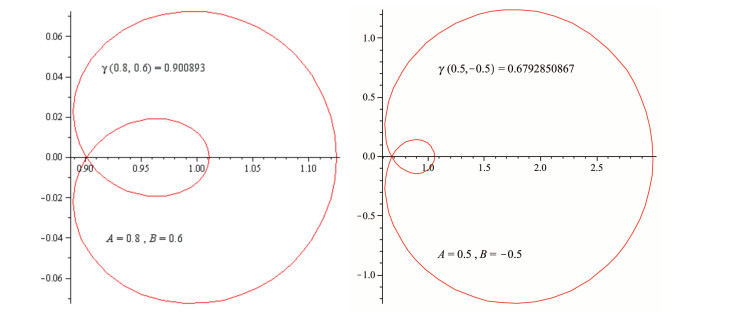









 DownLoad:
DownLoad:




